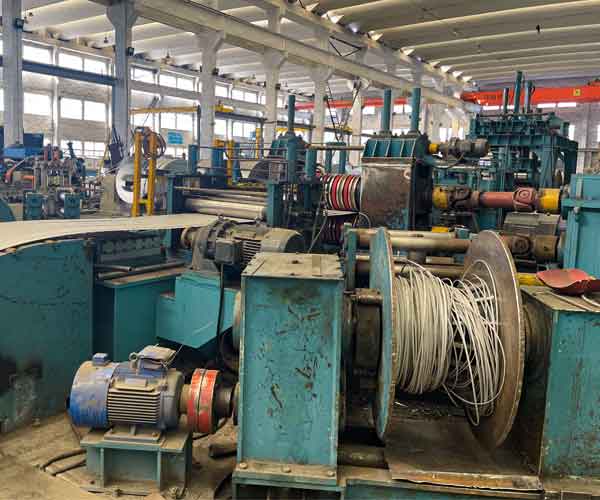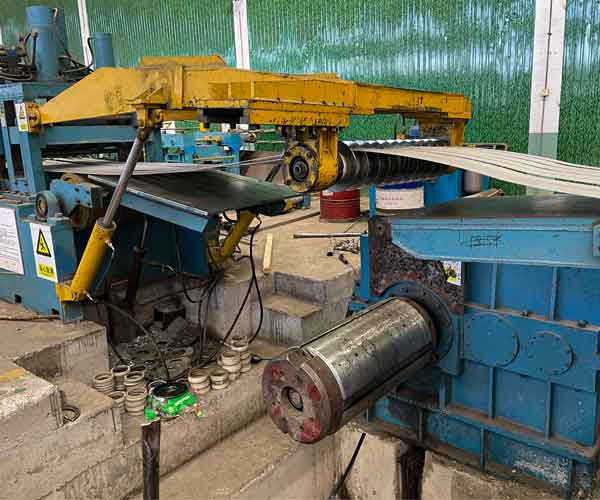Slitting Line & CTL Machine Maintenance Guide
Proper maintenance of slitting lines and cut to length machines is essential for ensuring operational stability, minimizing unplanned downtime, and maintaining precise cutting performance. Implementing a structured preventive maintenance program for mechanical, hydraulic, pneumatic, and electrical systems will extend equipment lifespan and improve production efficiency.
Daily Maintenance
Key activities for daily upkeep of slitting lines and cut-to-length machines:
- Hydraulic System: Inspect all hoses and pipelines for leaks, cracks, or wear. Replace damaged components immediately. Use only manufacturer-approved hydraulic oil; lubricating oil is strictly prohibited.
- Drive Chains & Moving Parts: Ensure proper tension and lubrication. Remove dust, debris, and metal chips, especially near blades and rollers.
- Knives & Rollers: Visually inspect surfaces for contamination, burrs, or mechanical damage.
- Safety & Controls: Confirm all safety interlocks, sensors, and control panels are fully operational.
Weekly Maintenance
Recommended weekly preventive maintenance tasks:
- Hydraulic & Pneumatic Systems: Inspect tanks, valves, and pipe joints for leaks, pressure fluctuations, or unusual noises.
- Roller Alignment: Ensure proper alignment to avoid material misfeed or uneven slitting.
- Blade Clearance: Verify and adjust blade clearance for consistent cutting accuracy.
Monthly Maintenance
- Hydraulic Oil Replacement: Replace if contamination (metal chips, dirt, or discoloration) is detected. Routine oil changes improve system stability.
- Slitting Knives Monitoring: Check condition and perform cylindrical grinding based on production volume and wear.
- Lubrication: Re-lubricate all bearings, gearboxes, and moving mechanical parts following the lubrication schedule.


Semi Annual Maintenance
- Air Compressors: Complete inspection including filter cleaning or replacement, pressure regulation, and electrical safety testing.
- Electrical Systems: Thoroughly check control cabinets, inverters, wiring, and grounding to ensure compliance with industrial safety standards.
Annual Maintenance
- Drive Motors & Gearboxes: Service all AC motors, reducers, and couplings. Check for overheating, vibration, unusual noises, and oil leaks.
- Hydraulic Filters: Replace all return and pressure filters to maintain oil cleanliness and performance.
- Automation Systems: Re-calibrate PLCs, sensors, and AC controllers for consistent and reliable operation.
- Mechanical Alignment: Full inspection of clearances and alignment around recoilers, pinch rollers, and press arms.
Additional Recommendations
- Blade Maintenance: Sharpening frequency depends on material type and usage. Regular monitoring ensures consistent cut quality.
- Maintenance Log: Maintain a detailed log including technician name, date, observations, and actions taken.
- Original Parts & Consumables: Use only original manufacturer spare parts and recommended hydraulic oils and greases to maintain machine reliability and warranty coverage.
Benefits of Implementing a Preventive Maintenance Program:
- Maximize equipment lifespan
- Ensure consistent product quality
- Reduce unplanned downtime and maintenance costs
- Improve workplace safety
FAQ :
1. What is the importance of regular maintenance for slitting and cut to length machines?
Regular maintenance ensures consistent product quality, reduces downtime, extends machine lifespan, and minimizes costly repairs. For LotosSlitting equipment, scheduled inspections help keep your lines running at peak performance.
2. How often should I perform maintenance on my slitting line or cut to length machine?
It depends on your production volume and operating conditions. Generally, daily checks, weekly lubrication, and monthly inspections are recommended. LotosSlitting provides tailored maintenance schedules for each machine model.
3. Which parts of a slitting line require the most frequent maintenance?
Key components include:
Slitter knives and shafts
Recoiler and uncoiler bearings
Tension and guiding systems
Hydraulic and lubrication systems
Electrical control panels
Frequent cleaning and inspection of these parts prevent premature wear.
4. How can I keep the knives on my slitting machine sharp and accurate?
Regularly inspect and sharpen the slitter knives according to the material being processed. LotosSlitting recommends using certified sharpening services and proper storage to avoid damage to knife edges.
5. What are the signs my cut-to-length line needs servicing?
Common indicators include:
Inconsistent sheet lengths
Excessive burr or poor edge quality
Unusual vibrations or noises
Hydraulic or pneumatic leaks
Slow response from control systems
6. Does LotosSlitting offer maintenance training for operators?
Yes. LotosSlitting provides operator training programs covering daily maintenance, troubleshooting, and safety procedures to ensure your staff can handle basic servicing tasks effectively.
